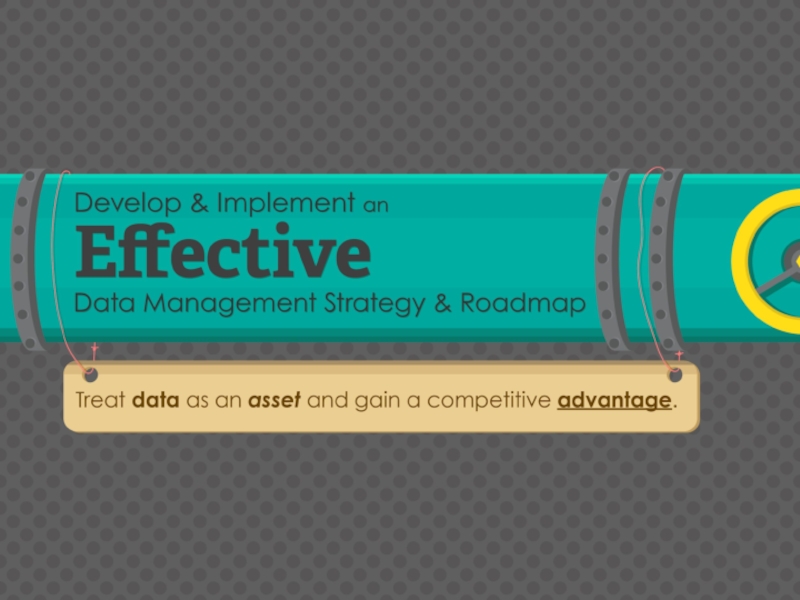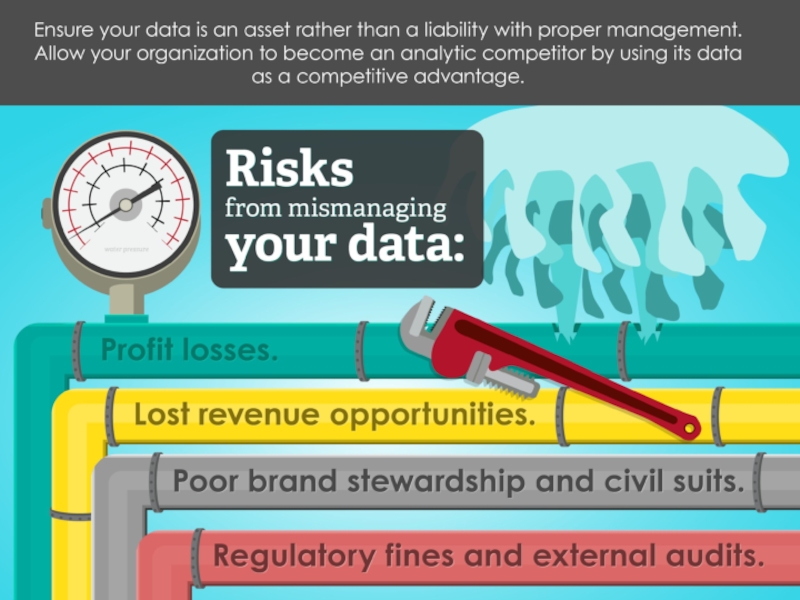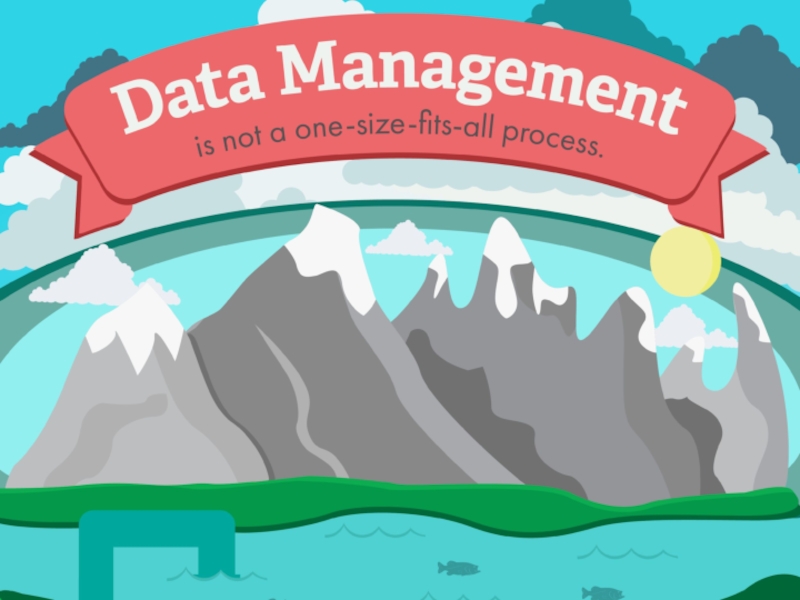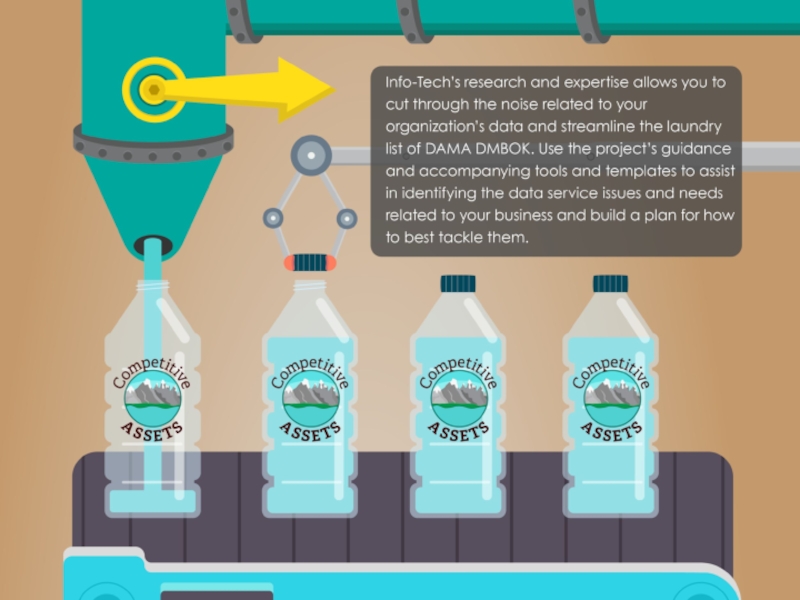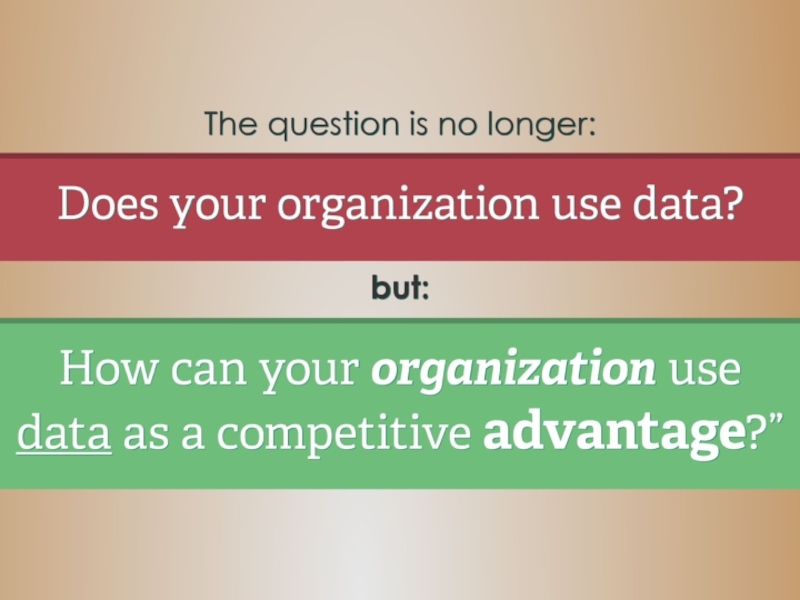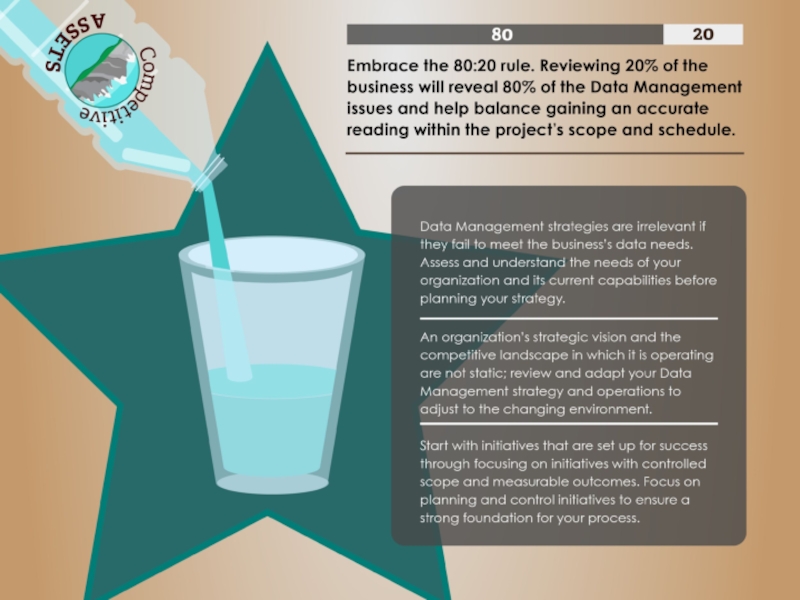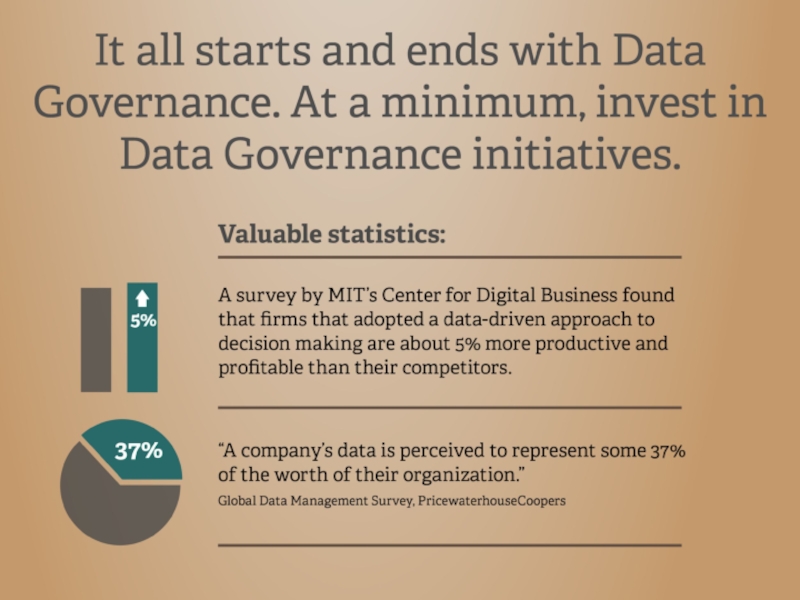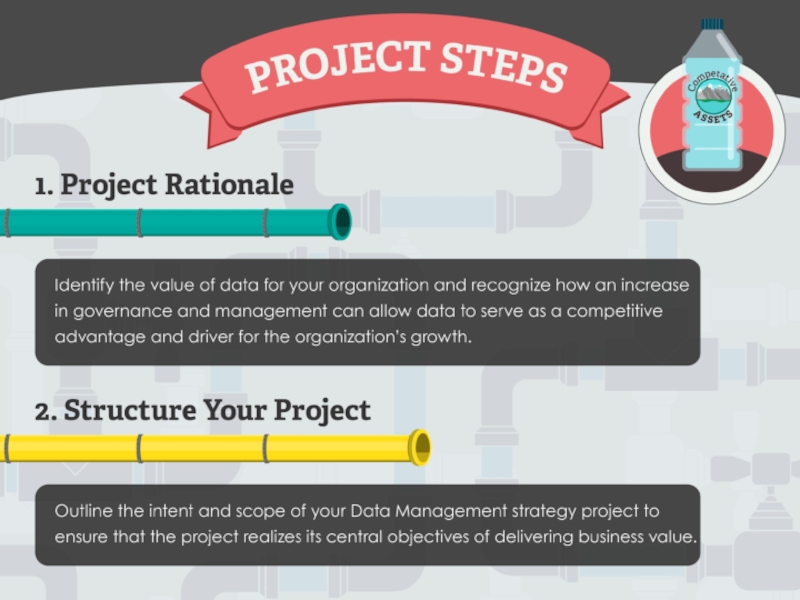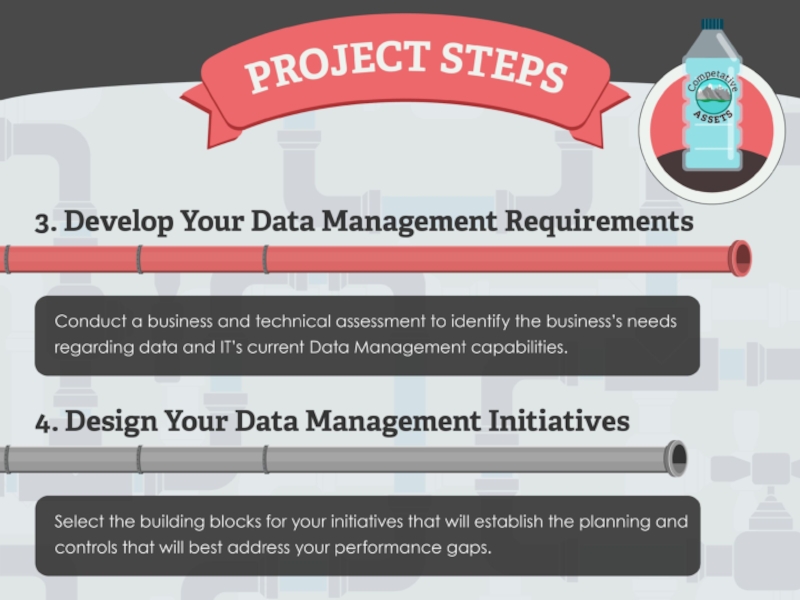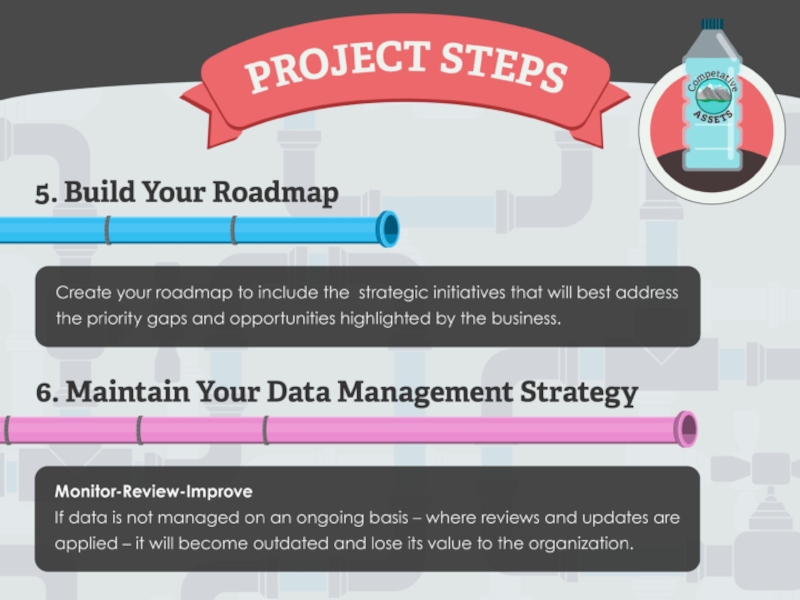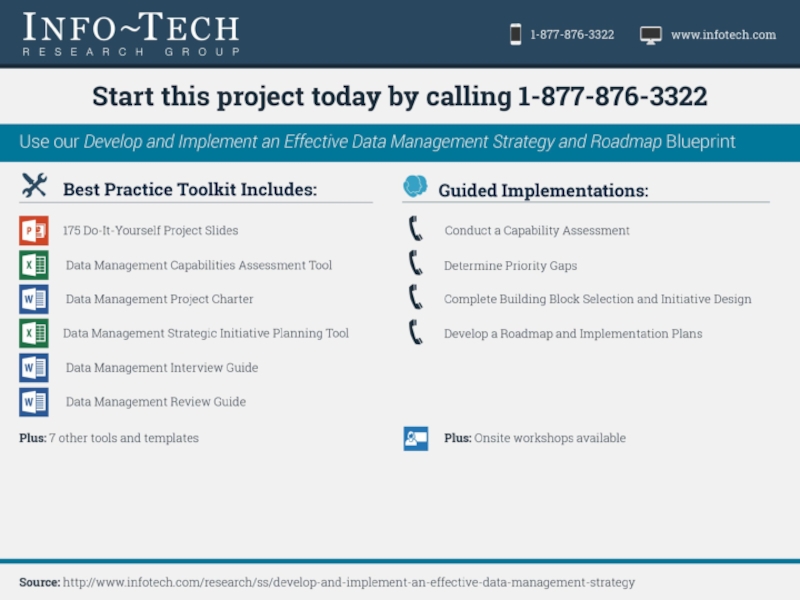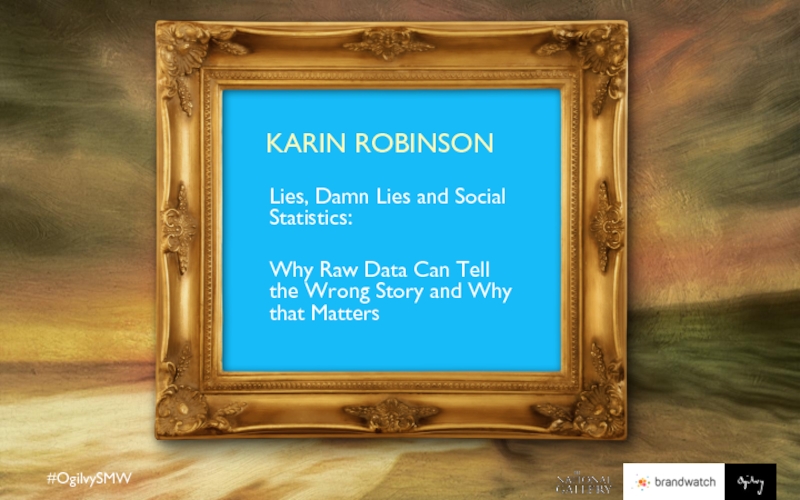as an asset and gain a competitive advantage.
This research is designed for Chief Data Officers or Data Managers seeking to create a formal data strategy and plans for improving the performance of their organization’s Data Management disciplines.
Ensure your data is an asset rather than a liability with proper management. Allow your organization to become an analytic competitor by using their data as a competitive advantage.
Risks from mismanaging your data:
Lost revenue opportunities.
Profit losses.
Poor brand stewardship and civil suits.
Regulatory fines and external audits.
The question no longer is; “Does your organization use data?”, but “How can your organization use data as a competitive advantage?”
Embrace the 80:20 rule. Reviewing 20% of the business will reveal 80% of the Data Management issues and help balance gaining an accurate reading within the project’s scope and schedule.
Data Management strategies are irrelevant if they fail to meet the business’s data needs. Assess and understand the needs of your organization and its current capabilities before planning your strategy.
It all starts and ends with Data Governance. At a minimum, invest in Data Governance initiatives.
Start with initiatives that are set up for success through focusing on initiatives with controlled scope and measurable outcomes. Focus on planning and control initiatives to ensure a strong foundation for your process.
An organization’s strategic vision and the competitive landscape in which they are operating are not static; review and adapt your Data Management strategy and operations to adjust with the changing environment.
Valuable statistics:
A survey by MIT’s Centre for Digital Business found that firms that adopted a data-driven approach to decision making are about 5% more productive and profitable than their competitors.
“A company’s data is perceived to represent some 37% of the worth of their organization.”
Global Data Management Survey, PriceWaterhouseCoopers
Step Insight (or Description if no insight is present)
Identify the value of data for your organization and recognize how an increase in governance and management can allow data to serve as a competitive advantage and driver for the organization’s growth.
Outline the intent and scope of your Data Management strategy project to ensure that the project realizes its central objectives of delivering business value.
Conduct a business and technical assessment to identify the business’s needs regarding data and IT’s current data management capabilities.
Select the building blocks for your initiatives that will establish the planning and controls that will best address your performance gaps.
Create your roadmap to include the strategic initiatives that will best address the priority gaps and opportunities highlighted by the business.
Monitor-Review-Improve
If data is not managed on an ongoing basis – where reviews and updates are applied – it will become outdated and lose its value to the organization.
- Главная
- Разное
- Дизайн
- Бизнес и предпринимательство
- Аналитика
- Образование
- Развлечения
- Красота и здоровье
- Финансы
- Государство
- Путешествия
- Спорт
- Недвижимость
- Армия
- Графика
- Культурология
- Еда и кулинария
- Лингвистика
- Английский язык
- Астрономия
- Алгебра
- Биология
- География
- Детские презентации
- Информатика
- История
- Литература
- Маркетинг
- Математика
- Медицина
- Менеджмент
- Музыка
- МХК
- Немецкий язык
- ОБЖ
- Обществознание
- Окружающий мир
- Педагогика
- Русский язык
- Технология
- Физика
- Философия
- Химия
- Шаблоны, картинки для презентаций
- Экология
- Экономика
- Юриспруденция
